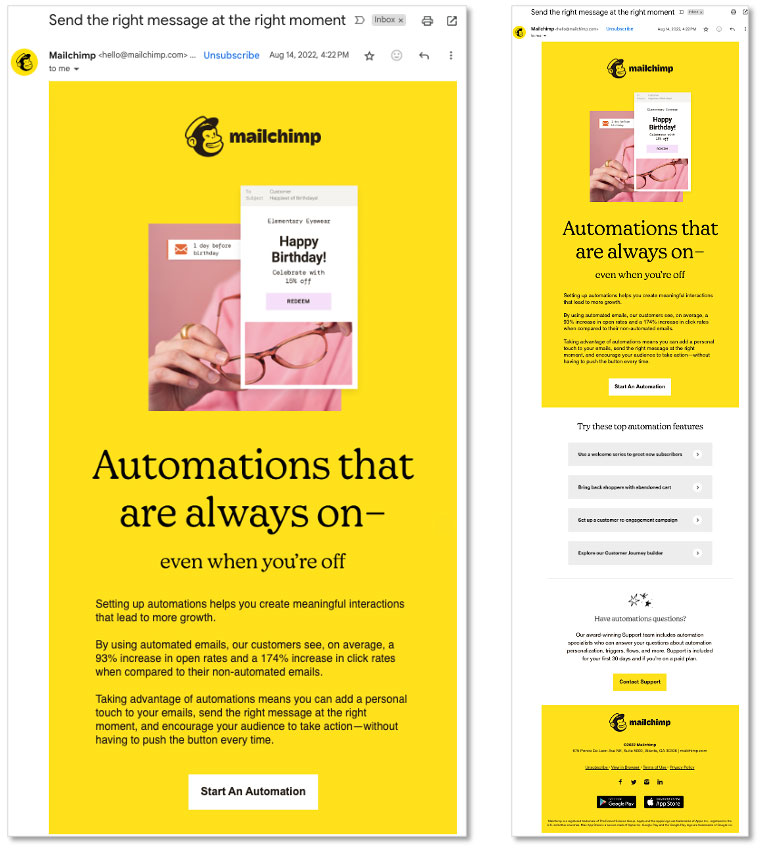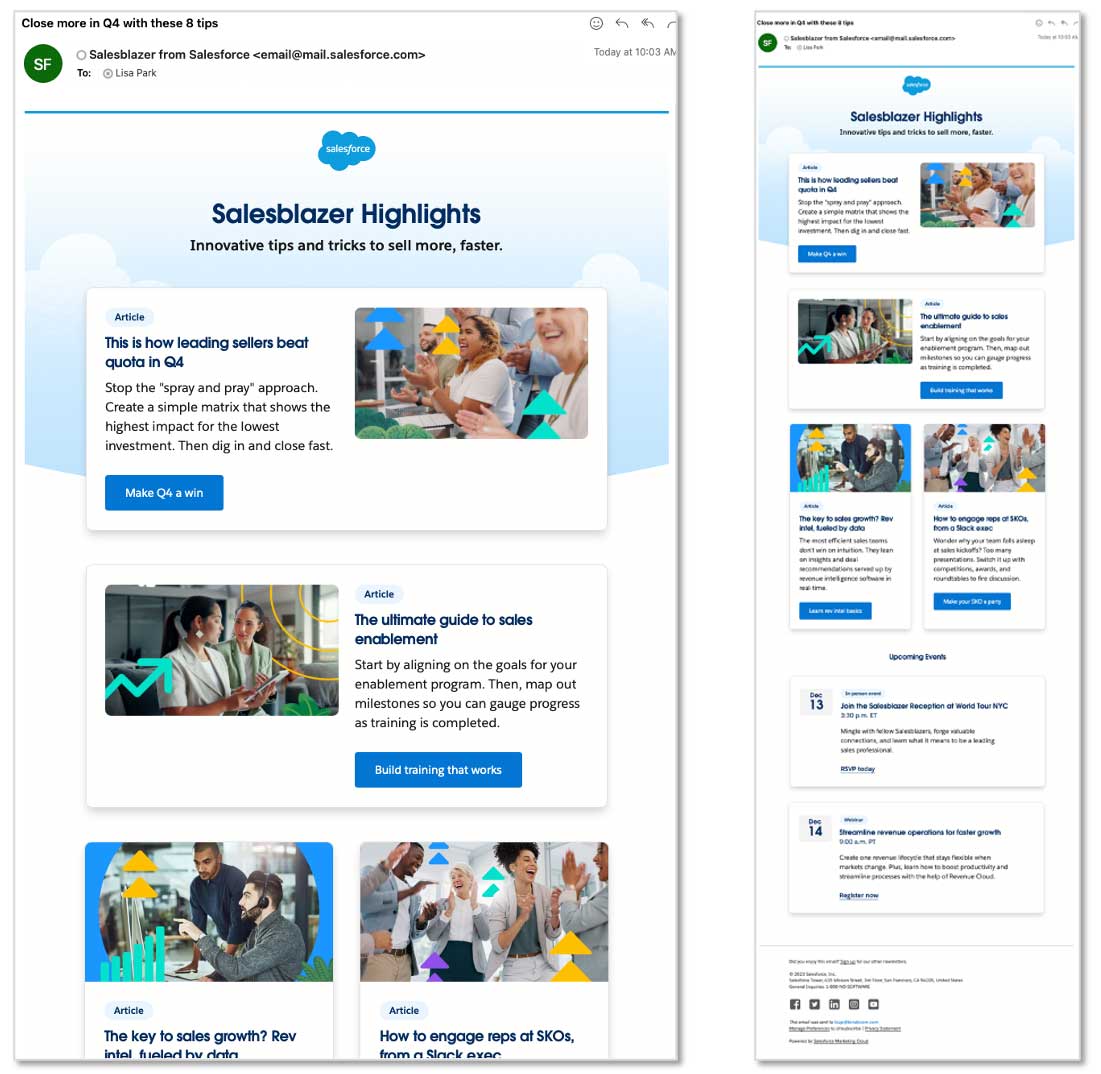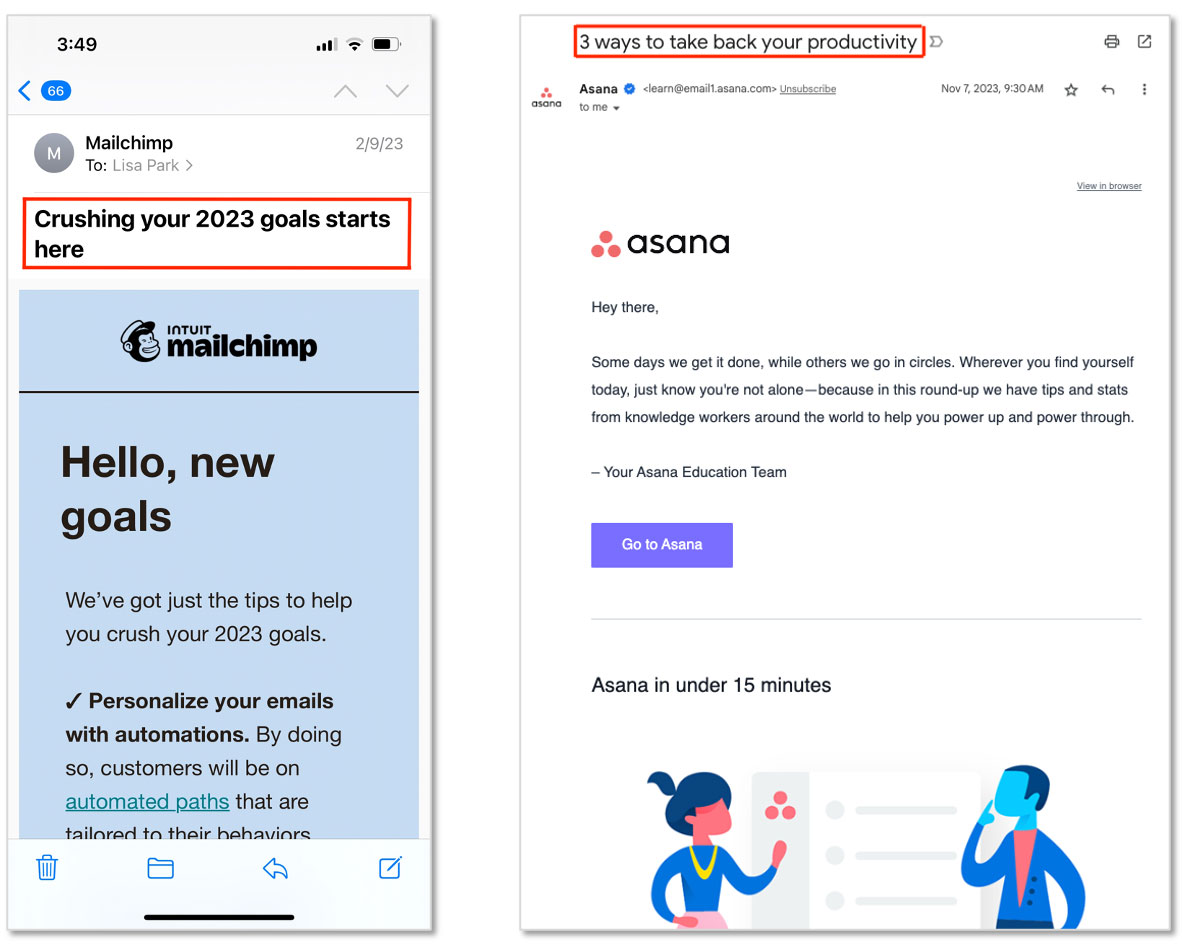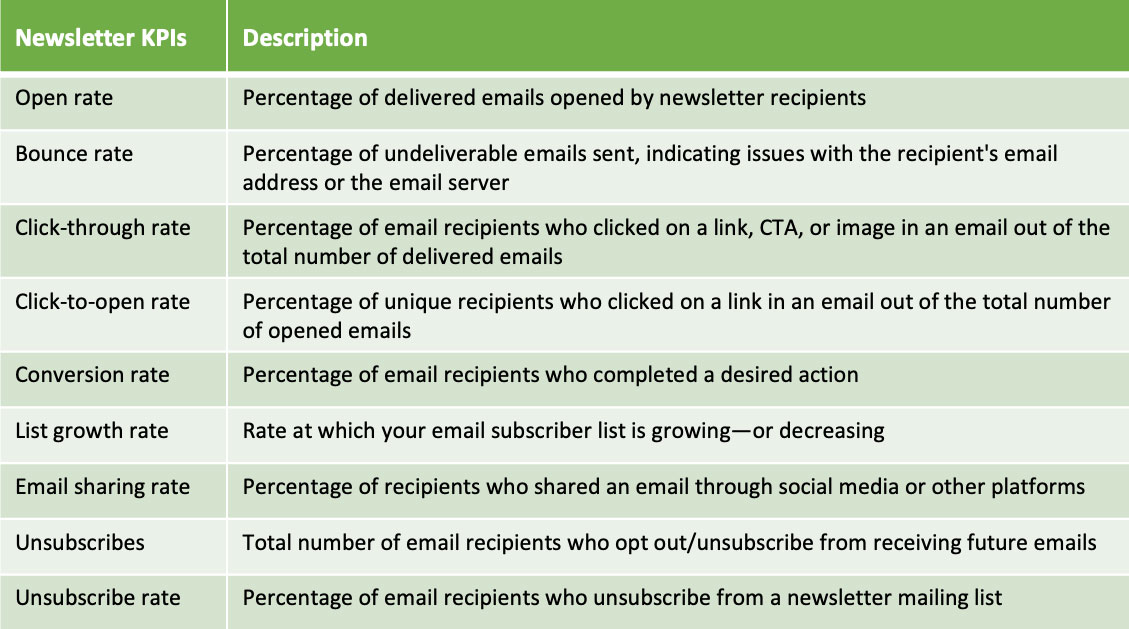Does your B2B newsletter stand out? Does it rise above the clutter and connect with your users, or is it getting less attention than in the past? The latter scenario is becoming more common, due to the sheer volume of emails hitting inboxes: 64 percent of consumers and B2B buyers feel overwhelmed by the volume of emails they receive, according to a Gartner report.
Yet according to the Content Marketing Institute, B2B marketers continue to rely on email newsletters as a top channel to distribute content to customers and prospects. And it’s no wonder as 77% of B2B buyers say email is still the way they prefer to be contacted—over twice as much as any other channel.
Read on to learn how to optimize your B2B newsletters by applying best practices for content, design, and distribution. And check out a few of the best email newsletter examples hitting inboxes today.
B2B Newsletter Best Practices to Enhance Your Content

The best B2B newsletters (see Mailchimp’s newsletter above) help build relationships with customers and prospects by featuring compelling content that addresses their needs. These newsletters aren’t about pushing product. Rather, they provide content that delivers value to users. To successfully resonate with subscribers and help drive conversions, the content in your B2B email should:
- Put users front and center. Include useful and usable content that’s laser focused on addressing your users’ current challenges and pain points. This will help build trust and credibility so that when your subscribers are ready to buy, your brand will be top of mind for them.
- Curate a list of relevant tips, tools, and best practices that can solve your users’ problems. Remember: Your B2B newsletter’s goal is to provide actionable information that helps as well as delights your users.
- Keep content dynamic and conversational. Avoid corporate jargon and dense, complex prose that can have your readers hitting the unsubscribe button. Instead, employ sharp and snappy copy that speaks directly to your users. And write ultra-clear, descriptive CTAs that engage users and inspire them to take action.
- Personalize your B2B newsletter content. Let readers customize their preferences so that you can deliver the topics they care about most. Personalize messaging in subject lines and body copy based on an individual’s role, preferences, and products. According to Litmus, 80% of customers are more likely to make a purchase from a brand that personalizes its email experiences.
- Limit copy to 50–125 words. Text length matters for clickthrough rates. According to Campaign Monitor, email copy length ranging between 50 and 125 words drives response rates of over 50%.
B2B Newsletter Best Practices to Uplevel Your Design

The best B2B newsletters (see Salesforce’s Salesblazer newsletter above) also adhere to a design that stands out while being straightforward and well-organized. Winning B2B email designs employ a clear and engaging visual hierarchy (via contrasting font sizes, link treatment, layout, white space, positioning, and imagery) that guides users by emphasizing key user-centered content and primary calls to action. Design rules include:
- Make your B2B email scannable. Add sections with clear headers. Go with pithy paragraphs (one to two sentences), bulleted or numbered lists, and attractive visuals to make content consumption effortless and enticing for your readers.
- Make it accessible for readers with visual or auditory limitations. Be sure to use web-safe fonts to support easy readability no matter the device they’re on. In addition, employ alt text for images, and include descriptive copy for hyperlinks.
- Use a brand-centric color palette. The goal is to maximize your brand’s appeal. Leverage two brand colors, three at most, to express your brand personality.
- Include one to three images. According to a Constant Contact study that analyzed over 2.1 million emails, brands that used one to three images had the highest click-through rates. Go with unique/custom images or videos that pique your readers’ interest. And consider including human-centric imagery that reflects and connects with your users.
- Make it mobile-friendly. Your users are most likely accessing your B2B newsletter via mobile. So, it makes sense to keep your email layout simple and concise. Opt for a single-column format. If your template has elements in a two-column format, make sure they stack correctly when viewed on a smartphone.
B2B Newsletter Best Practices to Optimize Distribution

Frequency isn’t the only thing to consider when it comes to sending your B2B marketing emails. You’ll also want to keep character counts in mind when creating subject lines and preheader text that grab your reader’s attention and are mobile-friendly.
- Send an email once a week. According to Campaign Monitor, more than 60% of customers want to receive weekly emails from brands they follow. That said, if possible, give your readers control over how often they’d like to receive your emails via an email preference center.
- Master the catchy, succinct subject line. (See B2B email marketing examples from Mailchimp and Asana above.) Include keywords and try to front-load with the most important/compelling points. As a general rule, you’ll want to limit your subject lines to 28–58 characters. But start with 28–39 characters (around five to six words), which is ideal for mobile.
- Differentiate preheader text from your subject line, while ensuring that the overall message is cohesive. Always include a call to action and front-load keywords. Limit preheader text to 40–130 characters. If you’re taking a mobile-first approach, then shoot for preheader text that’s 30–55 characters.
Measuring the Success of Your B2B Newsletters

Optimizing your B2B email newsletter is an ongoing process that requires a deep understanding of your users’ needs and preferences as they change over time. That’s why it’s important to continuously measure your B2B email’s performance against a set of KPIs such as those listed in the table above. This will help you track engagement and conversion so that you can make incremental improvements to your newsletter. Some best practices to consider:
- Align KPIs with newsletter objectives (e.g., for engagement, consider including a number of comments KPI).
- Track desktop vs. mobile performance.
- Compare performance against historical data as well as industry benchmarks.
- Monitor performance at regular intervals—weekly, monthly, per campaign, etc.—and make adjustments based on the data. Track fluctuations and trends month-over-month or by quarter as well.
- Prioritize various A/B tests, isolating one element at a time. This can include different email formats, email length, visual treatment, subject lines, CTA buttons, copy tone/style, and more. Then refine your newsletter based on A/B test results.
- Send surveys to your email subscribers semi-annually to gauge content preferences and identify trends.
Boost Email Marketing Engagement and Conversions with Tendo
Need help optimizing your B2B newsletter? Tendo can audit and benchmark your B2B marketing emails and provide actionable recommendations on how to improve them. We can also provide copy and design support to help you deliver awesome content experiences. Contact us to learn more.









